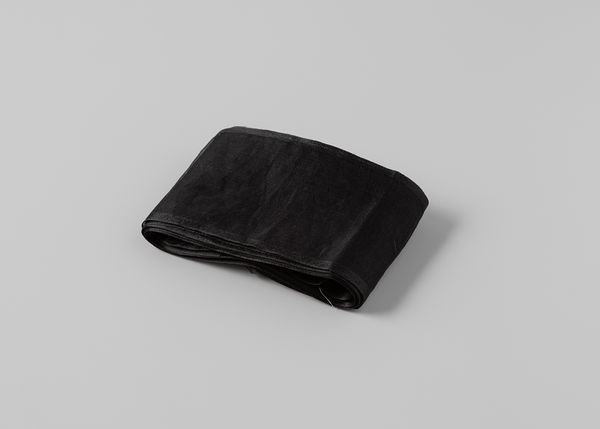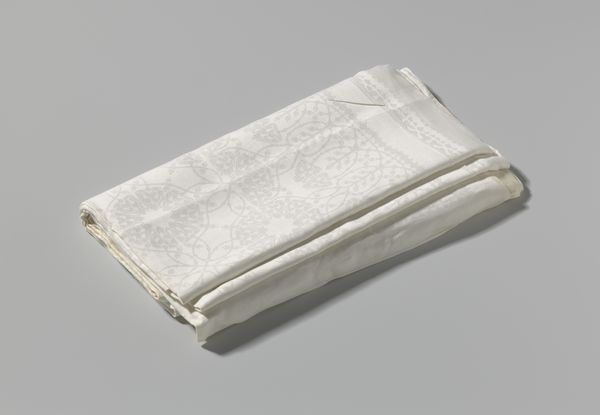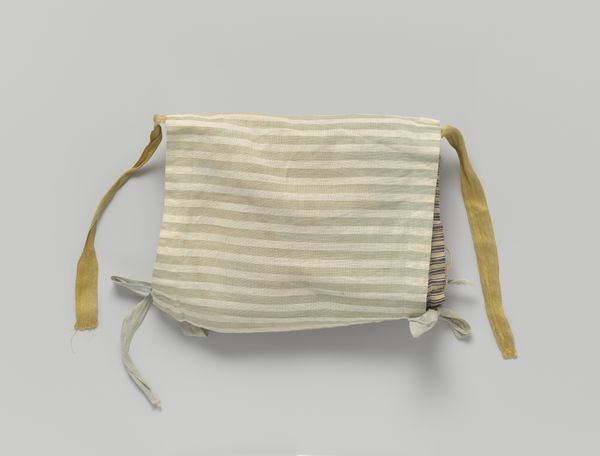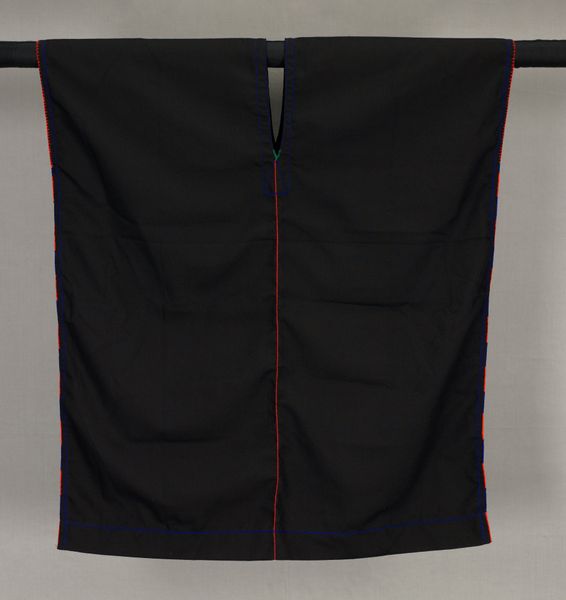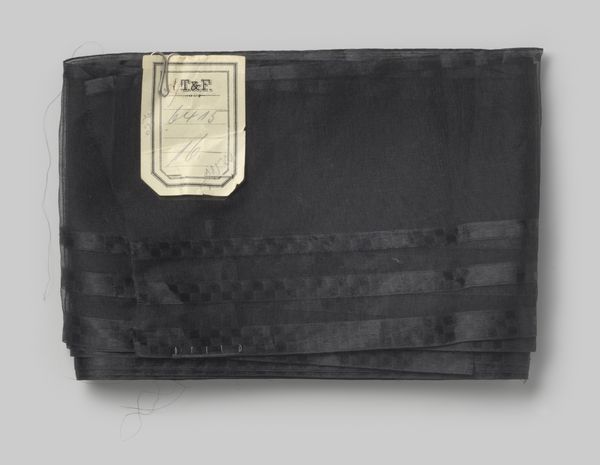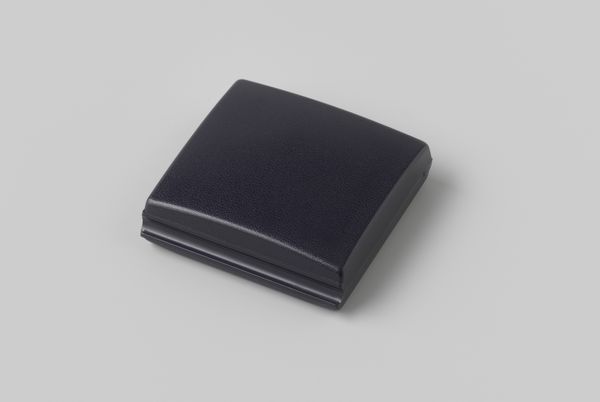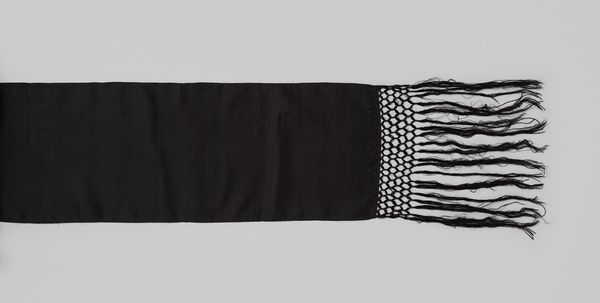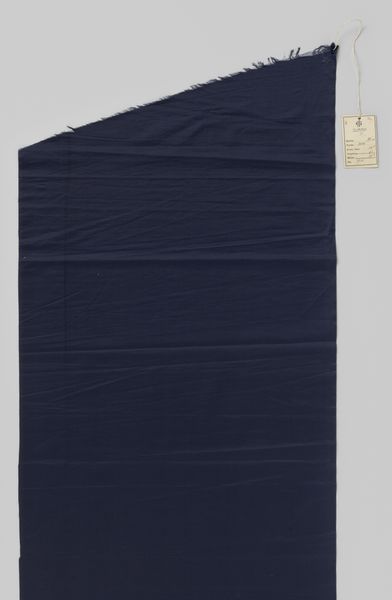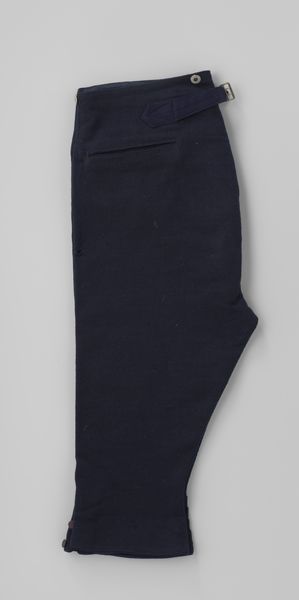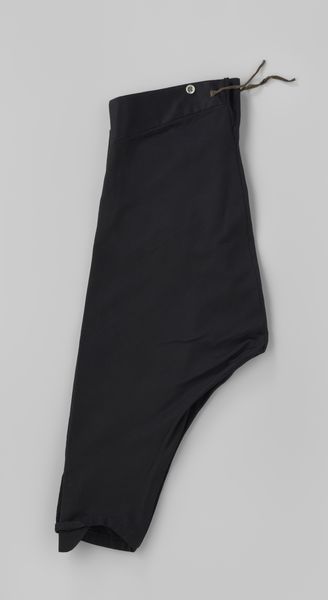
textile, photography
#
textile
#
photography
Dimensions: width 10 cm, height 3 cm, length 26 cm
Copyright: Rijks Museum: Open Domain
Curator: This photographic work, simply titled "Karton met marineblauw lint van zijdegaas", or "Cardboard with Navy Blue Silk Gauze Ribbon," dates back to around 1900. It's currently part of the Rijksmuseum's collection. Editor: My first impression? An odd somberness for something intended, perhaps, as decorative. The way the ribbon is so meticulously presented suggests a controlled melancholy. What strikes you about it compositionally? Curator: Indeed. Formally, I find the arrangement particularly compelling. The deliberate folds of the ribbon, resting on what seems to be simple cardboard, create a sense of restrained volume and play with texture. The subtle variations in the weave of the silk gauze present delicate striations. Editor: Right, those subtle striations hint at luxury while the overall tone screams the era's complicated relationship to class and industrial production. Whose labor was involved in its making, for example? Where was the raw silk sourced? Were dyes natural or chemical, reflecting the shifts in labor during that time? The materiality begs these social and historical questions. Curator: An astute observation. I see the sharp green stitching binding the gauze ribbon at different points as acting to unify it, in a rhythmic arrangement and to stop its unraveling. We could describe its status between utility and ruin. Editor: I agree— that juxtaposition, and the photograph itself, speak to broader discourses. It makes you think about gender, fashion and how beauty itself becomes packaged and controlled in burgeoning consumer markets. Who uses it, where is it going, what does the ribbon embellish? Curator: Precisely, which in turn suggests how this image invites deconstruction through its inherent semiotic properties. The blue functions as a signifier for status, class, yet also feels weighted with emotion. It carries both promise and, potentially, despair. Editor: The object might be banal—a common adornment or tailoring flourish— but what its image asks us to confront is that the aesthetic is always intrinsically political. It forces us to contemplate this image's relevance in terms of past systems that were deeply interwoven. Curator: Your insights beautifully broaden the picture. By highlighting both its internal formalism and external connotations, we find this somewhat humble composition holding a world of social significance. Editor: And through rigorous interpretation, we have revealed the surprising ways that simple silk ribbon implicates history's big and complicated changes.
Comments
No comments
Be the first to comment and join the conversation on the ultimate creative platform.
